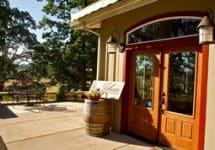Johan Vineyards Traditional Method Sparkling 2010




Product Details
Your Rating
Somm Note
Winemaker Notes


The Vikings sailed most of the North Atlantic, reaching west to Iceland, Greenland and Newfoundland, south to North Africa and east to the Middle East, as looters, traders, colonists, and mercenaries. Like his forefathers some 1,000 years earlier, Dag Johan Sundby, a native Norwegian, came to North America in 2004 seeking a new life. The descendant of a long line of tillers of the soil, young Johan sought to sink his roots deep into the Willamette Valley, to make his mark on the ancient Pinot Noir grape. Inspired by the legendary vineyards of Burgundy, he sought the ideal terroir, finding it in the similar latitude and climate of Oregon. Driven by New World optimism and youth, he is anchored by Old World values and a fierce determination to make premium wines that will stand the test of time.

Representing the topmost expression of a Champagne house, a vintage Champagne is one made from the produce of a single, superior harvest year. Vintage Champagnes account for a mere 5% of total Champagne production and are produced about three times in a decade. Champagne is typically made as a blend of multiple years in order to preserve the house style; these will have non-vintage, or simply, NV on the label. The term, "vintage," as it applies to all wine, simply means a single harvest year.

One of Pinot Noir's most successful New World outposts, the Willamette Valley is the largest and most important AVA in Oregon. With a continental climate moderated by the influence of the Pacific Ocean, it is perfect for cool-climate viticulture and the production of elegant wines.
Mountain ranges bordering three sides of the valley, particularly the Chehalem Mountains, provide the option for higher-elevation vineyard sites.
The valley's three prominent soil types (volcanic, sedimentary and silty, loess) make it unique and create significant differences in wine styles among its vineyards and sub-AVAs. The iron-rich, basalt-based, Jory volcanic soils found commonly in the Dundee Hills are rich in clay and hold water well; the chalky, sedimentary soils of Ribbon Ridge, Yamhill-Carlton and McMinnville encourage complex root systems as vines struggle to search for water and minerals. In the most southern stretch of the Willamette, the Eola-Amity Hills sub-AVA soils are mixed, shallow and well-drained. The Hills' close proximity to the Van Duzer Corridor (which became its own appellation as of 2019) also creates grapes with great concentration and firm acidity, leading to wines that perfectly express both power and grace.
Though Pinot noir enjoys the limelight here, Pinot Gris, Pinot Blanc and Chardonnay also thrive in the Willamette. Increasing curiosity has risen recently in the potential of others like Grüner Veltliner, Chenin Blanc and Gamay.
